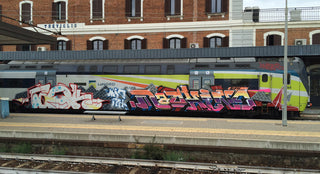I used to think trainwriters and graffiti artists were mischievous people, ruling the night wearing dark hoodies, using substances, and all the remaining stereotypes. I was partially wrong. Trainwriters are people you can sit down with, in front of a cup of hot tea, and learn about their passion. And from those talks, you will get the feeling that they are living a different life from yours. There are things in common for sure, but there is a lot more. This addition is based on the need for moments filled with adrenaline, an interest in uninhabited spaces like a yard at night, and love for the train systems.
It’s a different mentality that I am discovering and starting to appreciate, and I do admire their dedication. I borrowed a kettle from a friend and had hot tea with Chas and Mister—two huge names in the Dutch graffiti scene—during the Ironlak BBQ jam last year. Both of them have been around for years, doing graffiti even before I was born. I look up to them because they managed to transform their passion and love for graffiti into their careers—a dream job for sure.
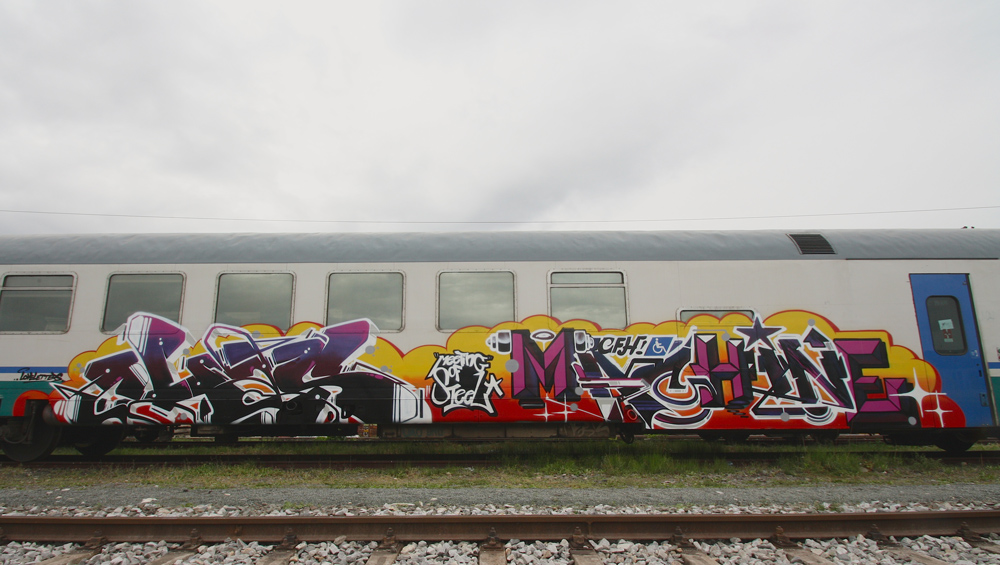
SPRAYTRAINS: “The main goal of a graffiti artist is to be the most seen, with the best quality lettering, and most quantity of work.” Do you agree with this statement? Does it describe yourself?
CHAS: Yes, in my opinion, you are a king when you have style and you did a lot and did everything like walls, trains, freights—everything!
MISTER: Yes, I agree with this about the most seen part because you are painting in public spaces and not in a gallery, but you can also ask yourself: What is quality and what is quantity? What makes the difference is the style or if something is beautiful. Quality is something you can discuss, quantity not so much. But for me, it’s not important that everybody sees it—it is important that I see it myself and my friends [see it].
“THE FIRST TIME I PAINTED A TRAIN, I WAS SO FUCKING NERVOUS I ALMOST PUKED.”
CHAS: If you have only quantity, I don’t like it either. Must always be a combination of both. Before, I wanted to be world famous, but to be realistic, I will not be the best graffiti artist in the world.
Who decides who’s the best? Who do you think is the best graffiti artist in the world?
MISTER: Probably the public makes the decision. I think in the beginning, you had people like Blade. To me, [he is] the king because he painted 5,000 panels before the rest of us even got out, you know. After that, there are no kings anymore, in my personal opinion, only good artists.
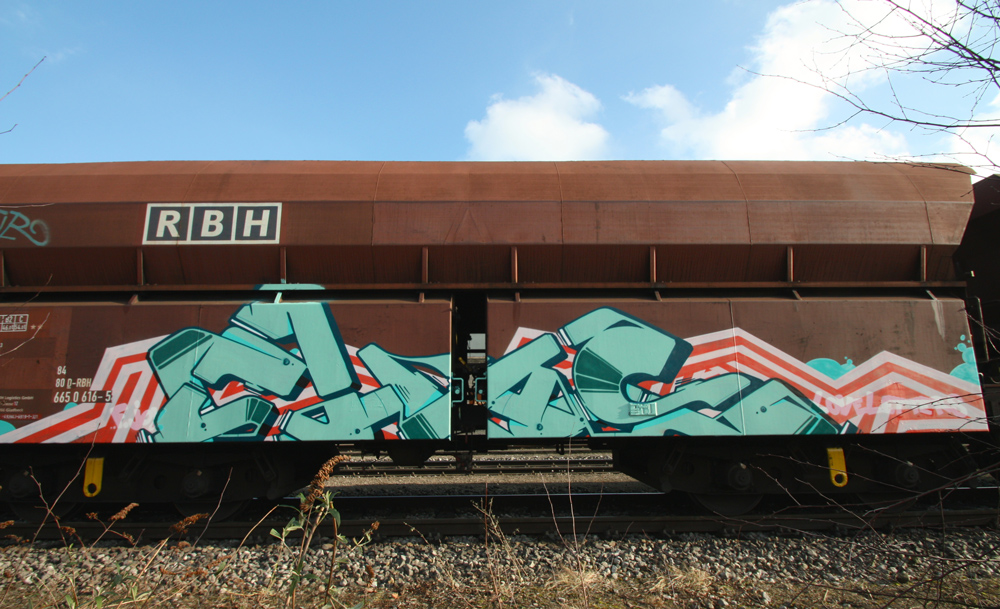
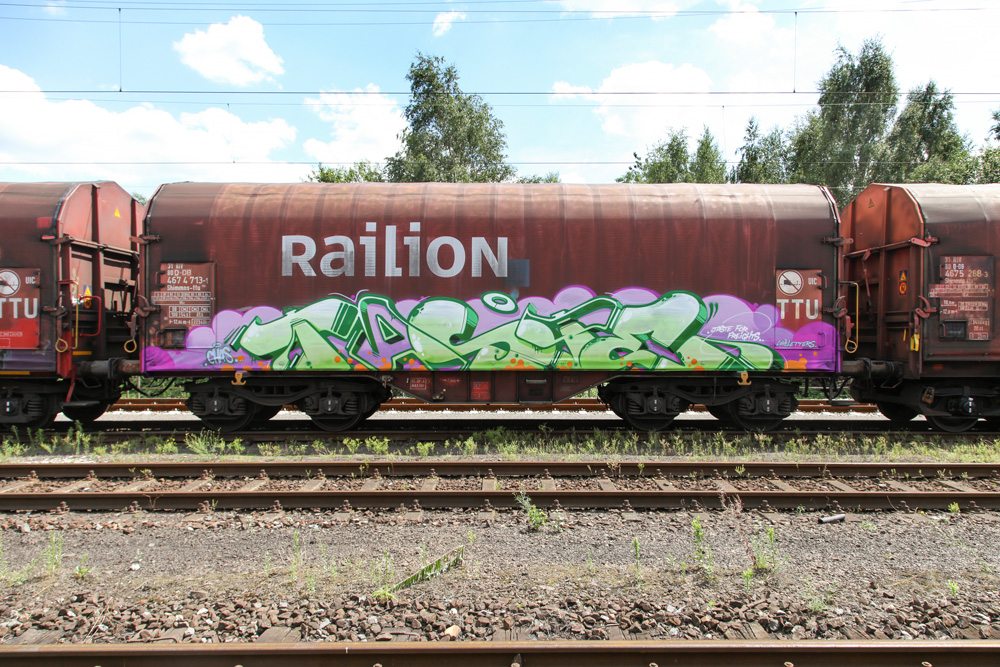
Do you two and other graffiti artists make a difference back in your country?
CHAS: I think we do quite well. I will not say we are the best artists in our country because there are other good artists, and some of them, in my opinion, are better than us, but we are doing well.
MISTER: I think we are both very dedicated. And we are the link between the older generation passing the culture to the new one.
When did you started painting graffiti and when did you move onto trains?
CHAS: I started painting graffiti in 1989, and in 1990, I painted my first train. I was very nervous, so I drank a lot of beer before to not be so nervous anymore and, of course, the panel looked like shit. But it was a nice memory.
MISTER: I started in 1987 and it took me really long to paint a train. My first train was in 1997, 10 years after. Because when I started, I was 11 years old; very young. And I had to wait to be 15-16 to ask my dad’s permission to go out at night. By the time I was 17, there was a big police roundup in my city. Everybody was telling me that trains were impossible to do. So I had the idea that trains were dangerous and it was best to wait.
“I FEEL ALIVE WHEN I DO IT.”
Can you describe the feelings of tension/excitement you get when you paint trains?
CHAS: Well, I’m not a real trainwriter—I like to paint everything: walls (legal or illegal ones), trains, and freights. I like the diversity. Painting illegal is a really nice feeling; it’s nice to be out at night, to be unseen, to be hidden from the rest of the world. I could not see myself being a writer that paints only legal walls. I mean, I like to paint legal walls, but I need that illegal feeling every now and then. How to bear the tension? You just get used to it.
Like I said, the first time I painted a train, I was so fucking nervous I almost puked—that’s how nervous I was. Or maybe it had something to do with the beers I had before. But as I said, when you do it, you get used to it and get to know when it’s dangerous and when it’s just chill. It’s all experience.
MISTER: You can compare the feeling to the one a bank robber feels when he’s doing a robbery. The first time, you don’t know the tricks and you don’t know the best moves to get in... but when you’ve been doing it for a long time, you know where to watch and how to do it so everything goes smoothly. First time I went in, I saw somebody in the yard and decided to run back out, thinking they might be after me. After so many years, you learn it’s better to wait, to check the situation and what people do. You don’t feel as much tension anymore. To me, this feeling is one of the most romantic things to do in a way; I feel alive when I do it.
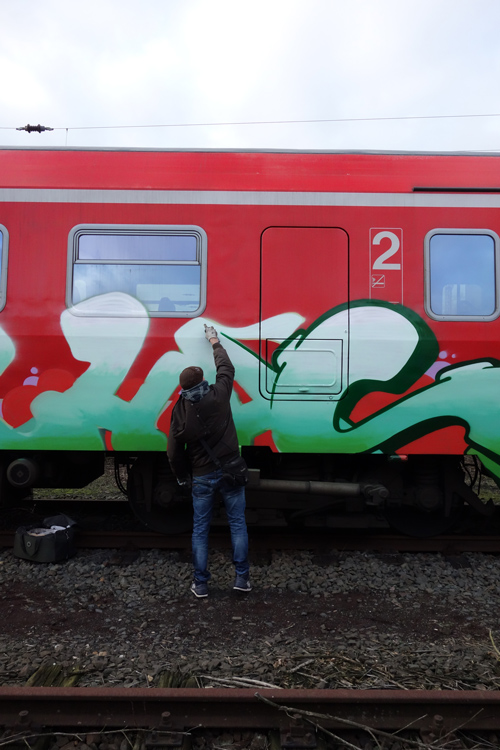
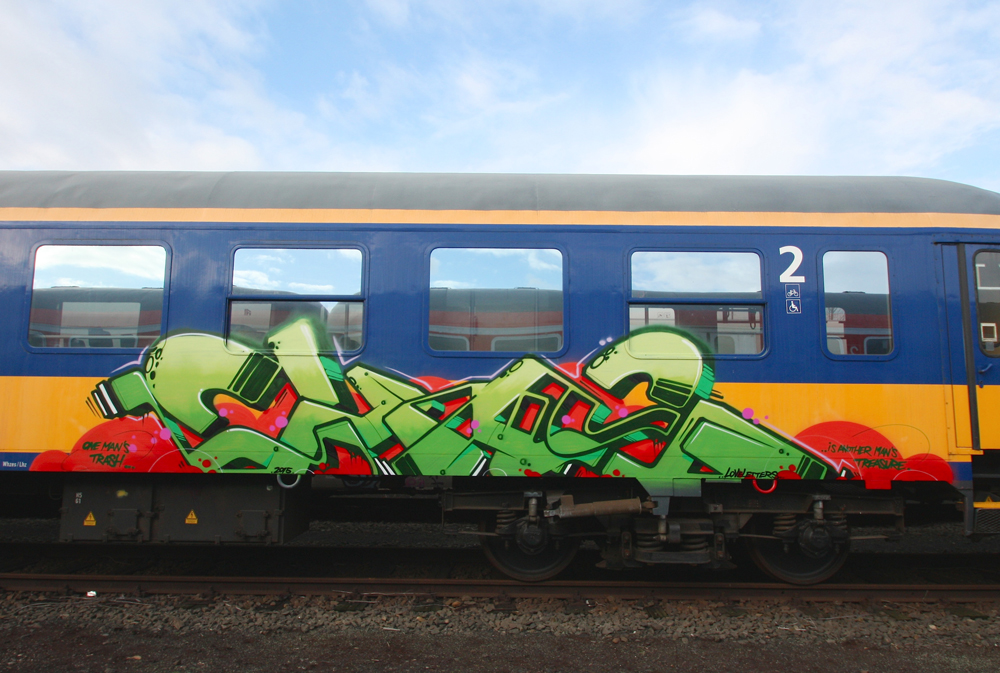
Is there a creative approach to your study? How much do you sketch your letters?
CHAS: Not enough! I should sketch more—it’s important. When you sketch, you try different things. There is no point in sketching while doing the same thing every time. It would be boring. I get bored pretty easily with my letters so I need to develop them, otherwise I won’t enjoy it anymore.
MISTER: For me, having different approaches is very important. When I want to paint a landscape in my piece, it follows the current mood I am in. Then sometimes I get bored with that and I want to switch my style and do more graphics, like logo style.
How did you pick your names?
CHAS: Well, I just liked the letters. I started writing CAZ. Then I found out that there was a guy already writing that name, and he was also a little bit angry with me because of that. So I added the H and then after some years I got bored with the Z and traded it for an S, which is a nice letter to use.
MISTER: Before, BOMB KID was my name. And when I painted illegally and didn’t have much time to do the Bomb Kid, I wrote only “Bomb.” After some years, I wasn’t a kid anymore so I went with Mister Bomb, and now it’s Mister Mister.
“OUR GENERATION HAS A LOT MORE RESPECT FOR EACH OTHER’S ARTWORK.”
Are there many differences between your generation of graffiti writers compared to the one that are painting nowadays?
CHAS: Yes, a lot. Respect, to start with. Our generation has a lot more respect for each other’s artwork. I will not go over someone else’s really good piece. Lately, I see a lot of young people who don’t know the influence of Internet. They talk way too much on the Internet. For instance, when they see a photo of a graffiti piece, they will comment saying it’s done by this writer of this crew. I fucking hate that. I write messages to these kids saying, “Hey, can you delete your comment?” but they don’t understand it—they don’t think it’s a problem. They don’t realize police have access to the Internet, too. They reply saying police don’t check Instagram. From my own experiences, I know that the police have Googled my name and found my old Flickr account and printed out pages from it. The kids now don’t see the connection. They think Internet and real life are two separate worlds. It’s not, it’s all connected. And it’s strange for us.
Also, we’ve had beef with some younger guys; we painted a huge wall and covered some little shitty piece made by them so they wrote on the Internet, “We are going to kick the asses of the motherfuckers that covered us.” And then, in real life, when Mister encountered these guys and said, “C’mon, let’s fight,” they were, “No, we didn’t mean that.” What?! If you wrote it on the Internet, you have to do it in real life as well. For me, those two things are the biggest differences between my generation and the newer one.
MISTER: I think it’s also a noticeable thing that the style of a graffiti piece has become global. You can’t blame the kids for being like this nowadays. When I started writing, we could tell which city the writer was from just by looking at certain tags and styles. But now, the styles are both too general and global. I learned graffiti from my mentor, an older guy named PHET (who’s also featured inside the Spraycan Art book). Back then, the information about this culture went from the mentor to the students. Now, people get information from everywhere. It’s a completely different approach.

How much and in which ways is graffiti a part of your life? What was your dream job when you were a kid?
CHAS: Well, graffiti is my life! It’s a cliché, but it’s true. I earn my money with graffiti. Graffiti is my hobby—it’s what I spend most of my time on, more than with my own family. When I was a kid, I wanted to be a professional soccer player, but I had more talent in graffiti than in soccer. I’m happy to say now doing graffiti is my dream job.
MISTER: For me, it’s the same. But also, graffiti has such a big role in my life that sometimes I have a love/hate relationship with it. It gives a lot, but it also takes a lot. Especially when you do it like me, guerrilla style. Which means I paint for 1 or 2 weeks literally non-stop and after that I feel empty because my normal life is not in balance anymore.
CHAS: It’s because you’re a maniac!
MISTER: Yeah, sometime the relationship I have with graffiti could be compared to one a drug addict has with heroin… When I was a kid, I wanted to be an architect because I always loved to draw buildings, but I wasn’t good in mathematics.
What are the differences between painting in Holland and here in Italy? Do you experiment with different approaches?
CHAS: It’s much more fun here in Italy! When it comes to painting trains, there’s a huge difference because the stuff we get away with here is never possible in Holland! Painting for a longer period in sweet spots with the lights on... it’s impossible to find the same atmosphere in Holland. I used to paint a lot of freight trains and I do most of my experiments on them. I use everything I’ve learned through experimenting—especially the skill to be quick.
MISTER: Yeah, it’s all about time. If you have more time, you can do more stuff, like more details. Sometimes it’s good, but other times you might have too much time and the energy rush leaves you. The excitement is in the energy, in the fact that you have to be quick. My pieces are always balanced on the time I have.

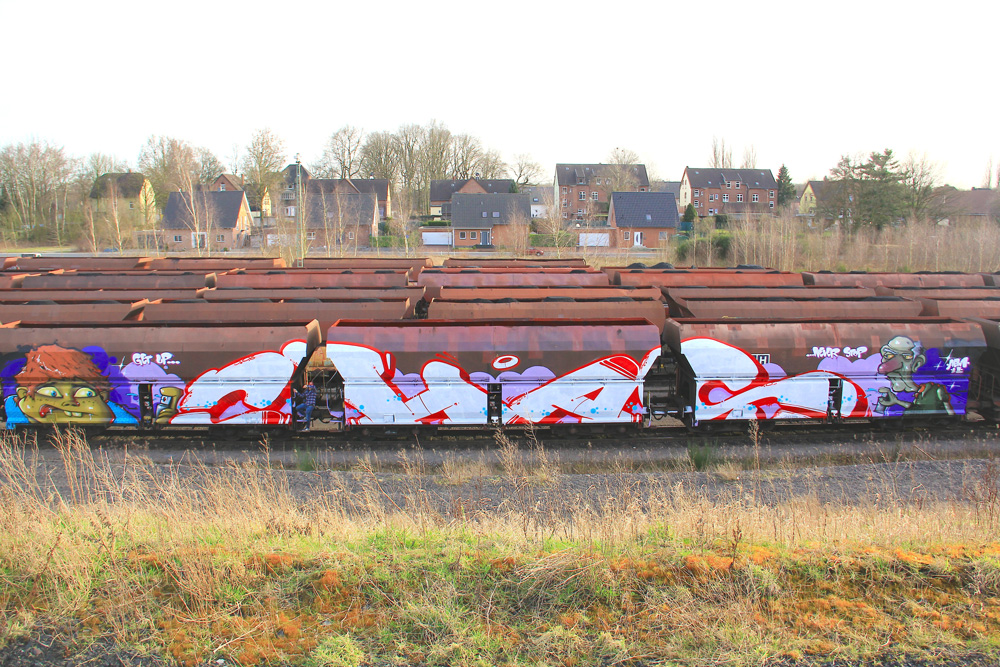
Any other countries you’ve been to and loved painting?
CHAS: I’ve been to so many countries, but I haven’t painted trains in all of them. One of the best experiences was in Colombia, South America. It’s awesome to paint there. You can really paint everywhere you want—it was like paradise. Non-stop painting for a week! Every wall we wanted, daytime, nighttime, highways… not a problem in sight.
MISTER: For me, Belgium is a bit comparable to here, but unfortunately it’s starting to get more nasty with fences and guards. Like in Holland. But for me, it’s still an opportunity to try and make something beautiful. In my travels, I did pieces in England, which is much worse than in Holland.
“I PAINT FOR 1 OR 2 WEEKS LITERALLY NON-STOP AND AFTER THAT I FEEL EMPTY BECAUSE MY NORMAL LIFE IS NOT IN BALANCE ANYMORE.”
Best things about your crews?
CHAS: Some of my crew friends and I have become really close friends through the years. For me, it’s the most positive thing about it. It’s cool to be in a crew because if some members—for instance, DOES—if he does a LoveLetter piece, it reflects on me. If I do something, it reflects on him. Together we build the LoveLetters name and it’s much easier to do that when we are 10 people rather than working alone.
But besides all of this, I think it’s a contradiction to be in a crew. I like the fact that I’m in a crew, but it’s a contradiction because graffiti is a big ego game. And if you put all these egos together in a crew, to work together… it’s a contradiction because everyone wants to stand out! I also think it’s boring when you limit yourself to paint only with your crew members.
MISTER: For me, I feel honored to be in my crew because the members are the most classic, old school writers of Holland; we are the Clowns From Hell. I felt very honored when they invited me to be a part of it. Some of these writers I’ve known for a long time—since the beginning of the ‘90s. Our families are in good relationships with each other and we spend time together without doing graffiti, which is nice. However, we’re very divided in different areas in Holland. That’s why I end up painting a lot with Chas, even though he’s not in my crew.
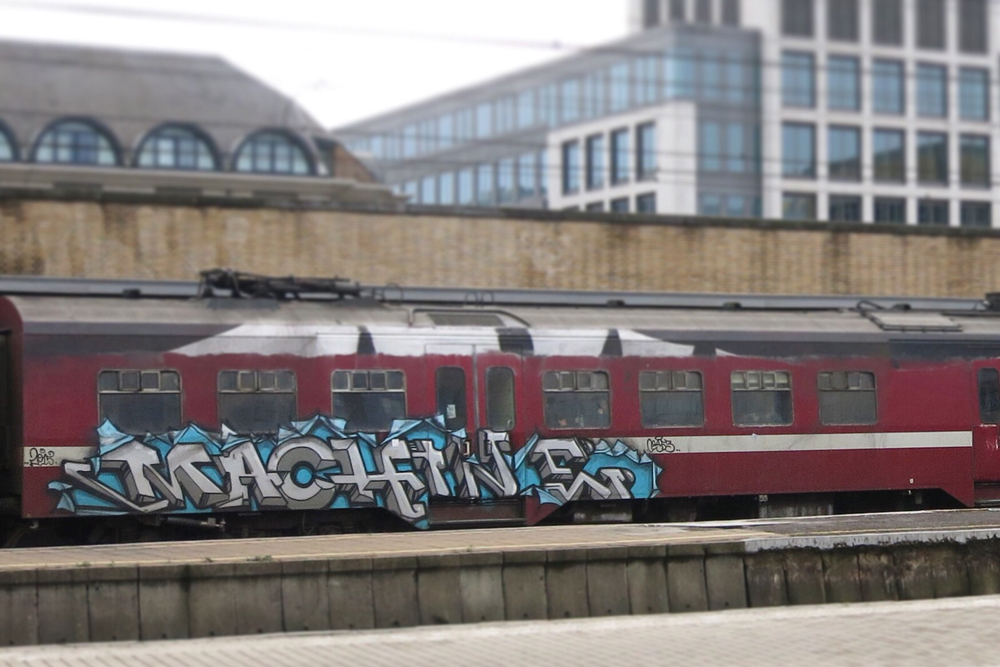
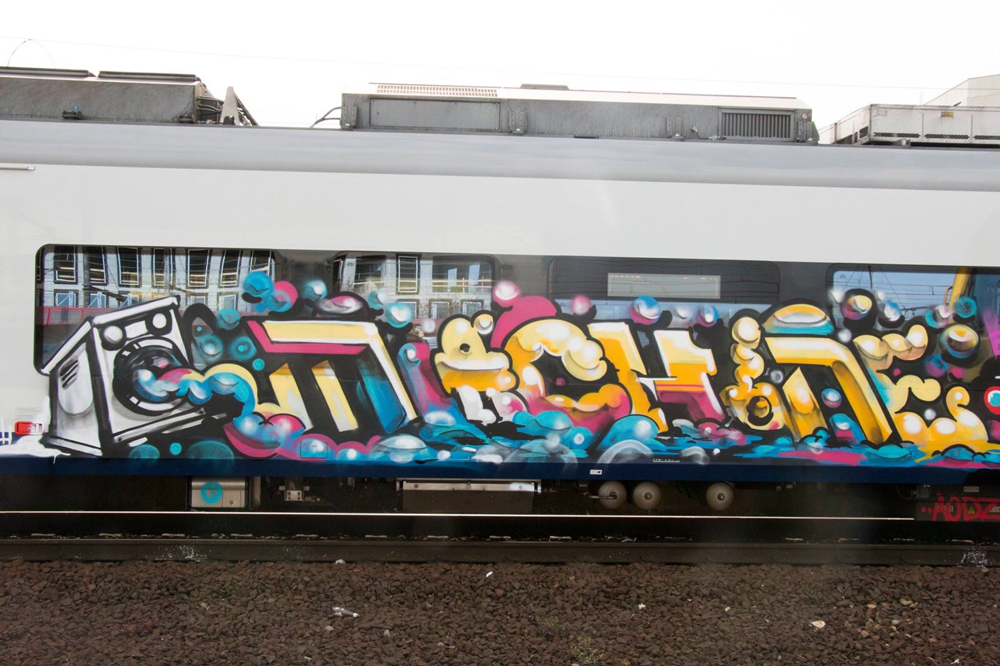
Best, most thrilling trainbombing action? The one you’ll never forget...
CHAS: Well, my first one.
MISTER: You should have quit after that one.
CHAS: Every piece has its special memory. The nice thing is that when I look at a picture of my piece, it has the power to bring back all those memories. So, every photo of every piece I did has memories of that night attached to it. It doesn’t have to be about a wild night or about getting chased or about a well-executed piece. It can be about the fact that you have painted in nice surroundings, with nice weather, nice mates, nice smells in the air.
MISTER: Sometimes, the strangest things can happen, some that you can’t expect. Like once, I was attacked by a big bird and it wouldn’t let me go! You even go to places where poor people would go to sleep and you don’t know if they are alive or dead. I really like all these aspects around the act of trainwriting. If all of these weren’t part of it, I probably would have already quit. I love the atmosphere of the night and what’s happening during it. However, I will say that my most unforgettable experience happened around the period of 9/11. Few weeks after the tragedy, we were in Paris and we really wanted to paint the classic subway, one of the most beautiful models. Everybody over there said that we were crazy and that it was impossible to do now since the level of security was higher.
They told us that nobody was painting since there were guards armed with guns in the tunnels. But we did it anyway, got inside the tunnel at 5 am, traffic was still going, and we were underneath the American embassy! The only way to escape once we finished was to go up a ladder and open the manhole. So we did it and we were out on the public square, where the guards were outside of the embassy. We managed to get away without anybody really noticing us. That was my most adrenaline rush moment. The following night, there was an exhibition with all the Parisian writers, and when they saw us they said, “Look, the Dutch guys that did it!”
What do you think about the “benchers”?
CHAS: I am very happy with benchers, especially German freights benchers, which are a lot! I like the work they do because most of the time, I just have night shots of my pieces, and freights move a lot so you might not be able to find your piece anymore. So I am always happy when I find a photo on a blog.
MISTER: I think that the benchers are as important for graffiti culture as the writers themselves because they preserve it. I know a guy that’s been taking pictures from 1978 up until now! He is as dedicated to photographing as we are to painting the pieces. I really have respect for them.
***

